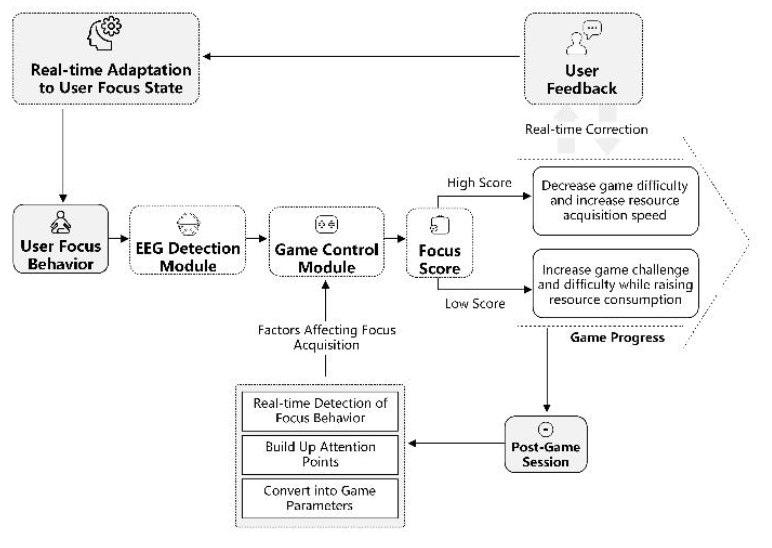Design and Research of a 3D Game Wearable Interaction System Based on the Bidirectional Mapping between EEG Focus and Game Parameters
Keywords:
EEG focus, Bidirectional mapping model, Game parameters, 3D game design, Wearable interaction systemAbstract
As a comprehensive medium integrating narration and interaction, games, with their instant feedback mechanisms and virtual reality features, have gradually become an essential carrier for emotional expression and experience. With the upgrading of users' emotional needs, the concept of how to construct an emotional feedback system based on physiological signals has become a research focus. Currently, emotional interaction technologies based on physiological signals in the gaming field generally face problems such as single interaction modes, significant feedback delays, and logical disconnection between virtual and real worlds. This research proposes a design scheme for a 3D game wearable interaction system based on the bidirectional mapping mechanism between electroencephalogram (EEG) focus and game parameters. Through the real-time acquisition, analysis, and processing of EEG signals, the player's focus is dynamically mapped to the ingame resource collection efficiency, establishing a correlation mechanism between the focus level and game parameters. As the game progresses, the system gradually increases the focus determination threshold, forming a progressive challenge mechanism that enhances the user's sense of immersion and emotional investment. Different from traditional competitive games, this system establishes a self-motivating interaction framework, where the focus duration accumulated by players in daily life can be automatically converted into game virtual resources, thus achieving the neural signal bridging of the interaction between real-world focus behavior and virtual resources. Experimental results show that this interaction system effectively improves the user's emotional experience and sense of immersion, and expands the application boundary of brain-computer interface technology in the interactive entertainment field. The research results not only break through the limitations of traditional game interaction models but also provide practical references for the integrated research of EEG-based affective computing and game interaction system design.





